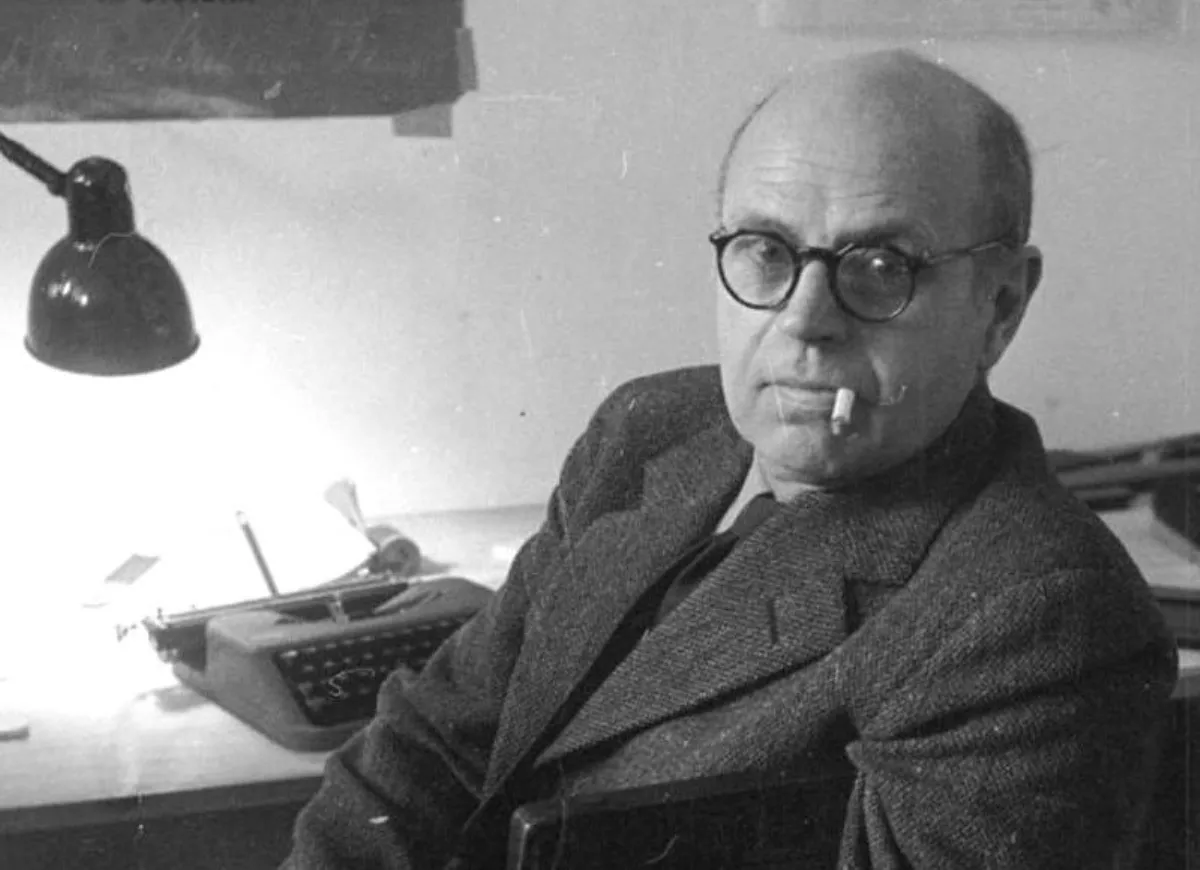 1.
1. Poul Henningsen was a Danish author, critic, architect, and designer.

 1.
1. Poul Henningsen was a Danish author, critic, architect, and designer.
Poul Henningsen is most associated with his design of the PH-lamp series of glare-free, shaded lamps.
Poul Henningsen's lamps used carefully analyzed reflecting and baffling of the light rays from the bulb to achieve illumination that was not harsh and glaring but shed warm, soft light.
Poul Henningsen was the fourth child of noted author Agnes Henningsen through an extramarital relationship she had with satirist Carl Ewald following her first marriage, that had ended in divorce.
Poul Henningsen entered into collaboration with the architect Kay Fisker in 1919.
Poul Henningsen designed the lamp to differ from the traditional design of gas light fixtures.
Poul Henningsen's writing emphasized the relationship between societal problems and architecture and the effects of Copenhagen's transformation into an urban metropolis.
In 1925, Poul Henningsen presented the Paris Lamp at the International Exhibition of Modern Decorative and Industrial Arts at Paris.
Rather than using beam lighting, which would illuminate the cars' roofs and hoods but leave the sides of the vehicles dark, Poul Henningsen iterated on the Paris Lamp design to create a lamp that would channel the light in oblique paths.
The lamp Poul Henningsen created for Forum would be the basis for the three-shade system.
The lamps were commercially successful and the royalties created the financial safety net for Poul Henningsen to focus on his literary work.
Poul Henningsen edited the polemic left-wing periodical, Kritisk Revy, in which he and his colleagues scorned old-fashioned style and cultural conservatism, linking these themes to politics.
Poul Henningsen made the Danish revues a political weapon of the left-wing without giving up its character of entertainment.
Poul Henningsen created the PH Grand Piano in 1930.
Poul Henningsen did a groundbreaking design with the PH Grand Piano that is characterised by the transparent glass-lid, the leather rim and the steel legs.
Poul Henningsen wanted to open up the piano and bring out the beauty of the musical parts.
Poul Henningsen tried to make parallels between prudery, moralizing, and fascist leanings.
Poul Henningsen accused the Social Democrats of lacking a firm and consequent cultural line.
Poul Henningsen took part in the anti-fascist propaganda, always trying to connect culture and politics.
Poul Henningsen joked that the house combines the disadvantages of a two-story house with the disadvantages of a one-story house.
Poul Henningsen moved out of the home after he divorced from his first wife Else Henningsen in 1942.
In 1940, Poul Henningsen contributed the song They tie us down mouth and hand to Kjeld Abell's revue Dyveke, in which the subtext called for resistance to the Nazis, while the German censors missed the double meaning and understood the song only at a surface level, as being about the restrictive bonds of marriage.
Poul Henningsen fled to neutral Sweden with the Jewish architect Arne Jacobsen and their wives in a rowboat led by a Jewish civil engineer and student rower named Herbert Marcus.
Poul Henningsen kept writing and debating and during the 1960s in many ways, the new generation made him something of a guru.
In 1948, Poul Henningsen jointly published a collection of children's songs with Bernhard Christensen.
In many ways Poul Henningsen is the one who completed the work of Danish critic and scholar Georg Brandes.
Poul Henningsen was somewhat superficial and light, but more modern and less elitist in his views.
In 1960, Poul Henningsen was again employed by Politiken and the international art industry magazine Mobilia.
Poul Henningsen became a member of the Danish Academy in 1963.
In 1963, Poul Henningsen was diagnosed with Parkinson's disease and struggled with difficulty speaking, tremors, and depression.
Poul Henningsen began to be viewed as a "Rasmus Modsat" within Danish culture and struggled to get published in Danish newspapers in the last years of his life.
Poul Henningsen was buried in Bispebjerg Cemetery in a common grave.
Today the furniture pieces designed by Poul Henningsen are produced by PH Furniture in Copenhagen.
The shape of the back of the PH Pope Chair is strongly influenced by a pope hat and Poul Henningsen named the chair in accordance with that specific design.
Poul Henningsen designed the lamps to spread the light horizontally but not upwards so that the light would not be seen from enemy airplanes, enabling the park to stay open until midnight despite the mandated wartime blackouts.
The inspiration for the design came after Poul Henningsen's visit to Canada.
Poul Henningsen saw beyond the strong and simple traits of the axe to chop wood and identified the potential for reinvention to a sturdy table where the legs of the first models were created in hickory wood.